Opening 20/09 - 20/09 - 08/11, 2012
-
Paolo Chiasera
màn
In Indo-Germanic languages, ‘màn’ means to think, know, understand, measure.
Starting from the root ‘màn’, you can build the word ‘mente’ (mind) and in general all of the words related to the idea of remaining. Thanks to this we think that the mind is a stable and everlasting matter.
An art exhibition is first and foremost a mental vision, a concept that links the works together and attempts to give a meaningful structure to the world through them. It is therefore the visual content of an insight that the artist conveys through the medium of painting, among other means, and its capacity to translate thought. Starting from this observation, Paolo Chiasera suggests extending the range of painting genres to include curatorial practices, translating the content of the exhibition into the code of painting – into an ‘Exhibition Painting’ – a show that operates within the framework of representation.
Like any exhibition, it includes works by various artists. But, by focusing on the Aristotelic meaning of concept – understood as knowledge of what is identical among a variety of things – it fruitfully sets itself apart from various artistic experiments of Appropriation and Re-appropriation art.
The freedom of expression offered by the mediation of painting is what unshackles the exhibition and its concept from all limitations, so that it can reconstruct itself within the sphere of the canvas as a realm of imagination and emancipation, as a proposition that the viewer’s mind is invited to tackle, bringing the experience of the show to completion on its own. Through images, the Exhibition Painting thus seems to take Lawrence Weiner’s ideas about the role of the viewer to a radical extreme, combining them with the cognitive explorations of Aby Warburg’s Atlas and further complicating the unstable relationship that exists between language and its context, between nature and culture, between similarity and simile.
Istante fermati, sei bello!, Madonna della Scodella and Melancholia are the titles of the three exhibition paintings that have been specially produced for this third solo show of Paolo Chiasera at Francesca Minini.
In Indo-Germanic languages, ‘màn’ means to think, know, understand, measure.
Starting from the root ‘màn’, you can build the word ‘mente’ (mind) and in general all of the words related to the idea of remaining. Thanks to this we think that the mind is a stable and everlasting matter.
An art exhibition is first and foremost a mental vision, a concept that links the works together and attempts to give a meaningful structure to the world through them. It is therefore the visual content of an insight that the artist conveys through the medium of painting, among other means, and its capacity to translate thought. Starting from this observation, Paolo Chiasera suggests extending the range of painting genres to include curatorial practices, translating the content of the exhibition into the code of painting – into an ‘Exhibition Painting’ – a show that operates within the framework of representation.
Like any exhibition, it includes works by various artists. But, by focusing on the Aristotelic meaning of concept – understood as knowledge of what is identical among a variety of things – it fruitfully sets itself apart from various artistic experiments of Appropriation and Re-appropriation art.
The freedom of expression offered by the mediation of painting is what unshackles the exhibition and its concept from all limitations, so that it can reconstruct itself within the sphere of the canvas as a realm of imagination and emancipation, as a proposition that the viewer’s mind is invited to tackle, bringing the experience of the show to completion on its own. Through images, the Exhibition Painting thus seems to take Lawrence Weiner’s ideas about the role of the viewer to a radical extreme, combining them with the cognitive explorations of Aby Warburg’s Atlas and further complicating the unstable relationship that exists between language and its context, between nature and culture, between similarity and simile.
Istante fermati, sei bello!, Madonna della Scodella and Melancholia are the titles of the three exhibition paintings that have been specially produced for this third solo show of Paolo Chiasera at Francesca Minini.
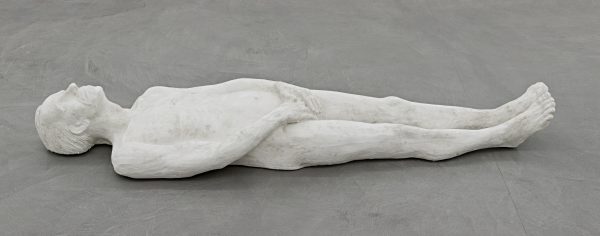 The Dog, 2008
The Dog, 2008
Plaster, animal bones
30×50×190 cm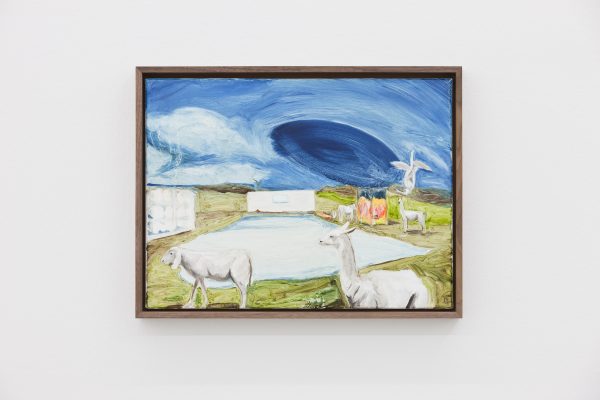 MOTIF, 2011Oil on canvas
MOTIF, 2011Oil on canvas
30×40 cm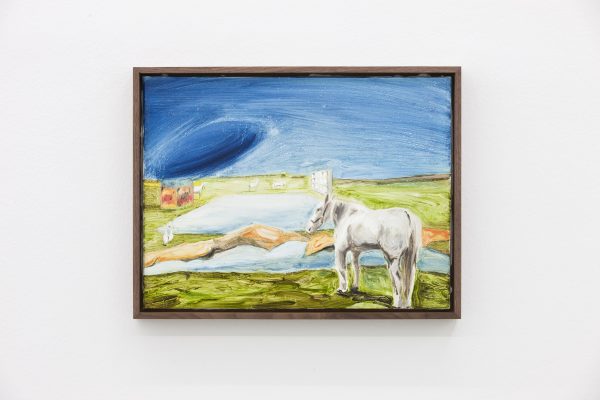 2011_MOTIF2_300dpiOil on canvas
2011_MOTIF2_300dpiOil on canvas
30×40 cm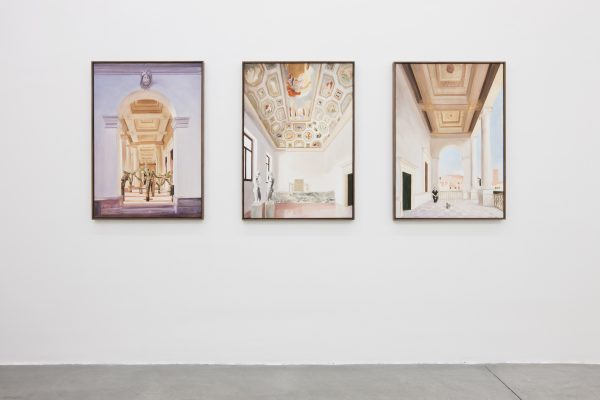 Istante fermati, sei bello! (MOTIF), 2012Oil on canvas
Istante fermati, sei bello! (MOTIF), 2012Oil on canvas
100×70 cm each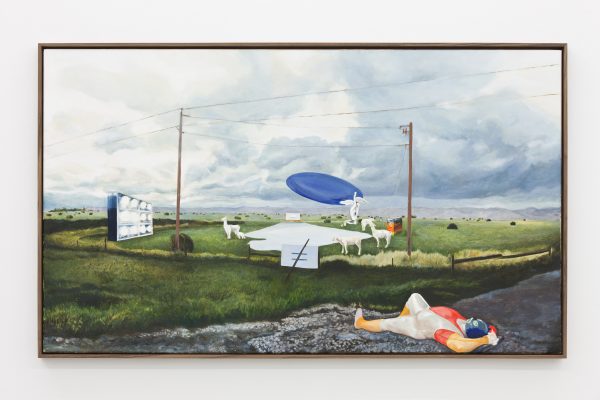 MOTIF (SCENIC CITY), 2012Oil on canvas
MOTIF (SCENIC CITY), 2012Oil on canvas
70×120 cm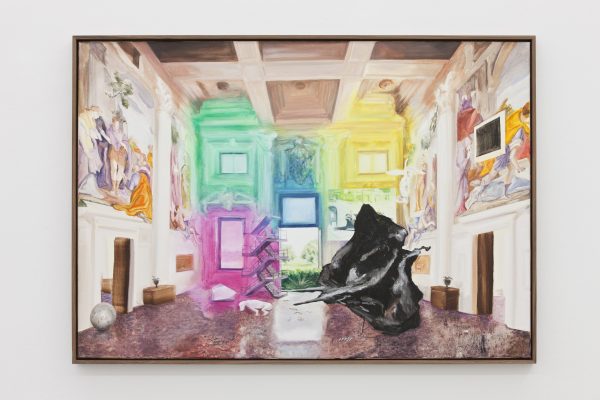 Melancholia, 2012Oil on canvas
Melancholia, 2012Oil on canvas
70×100 cm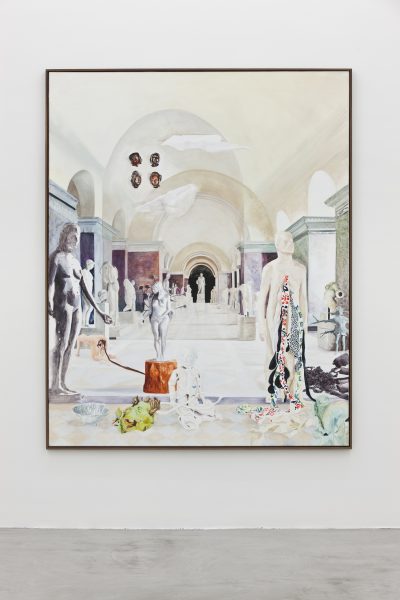 Madonna della Scodella, 2012Oil on canvas
Madonna della Scodella, 2012Oil on canvas
200×160 cm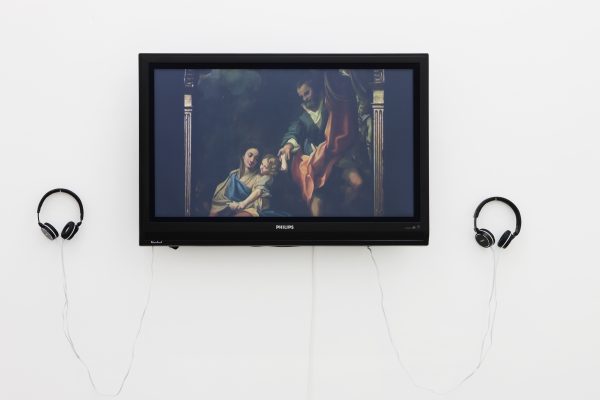 Madonna della Scodella, 2012Video, 13'
Madonna della Scodella, 2012Video, 13'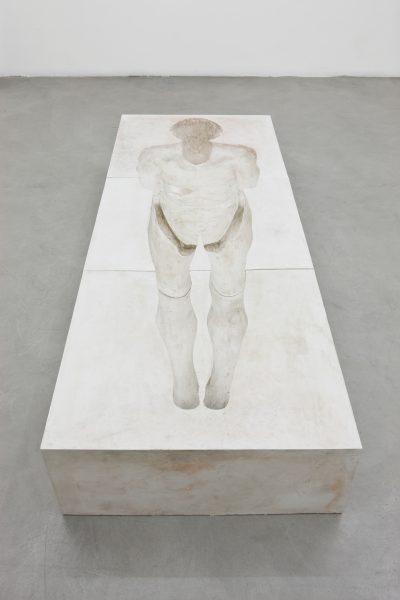 Mangiatoia, 2008Plaster
Mangiatoia, 2008Plaster
28,5×72,5×191,5 cm





























